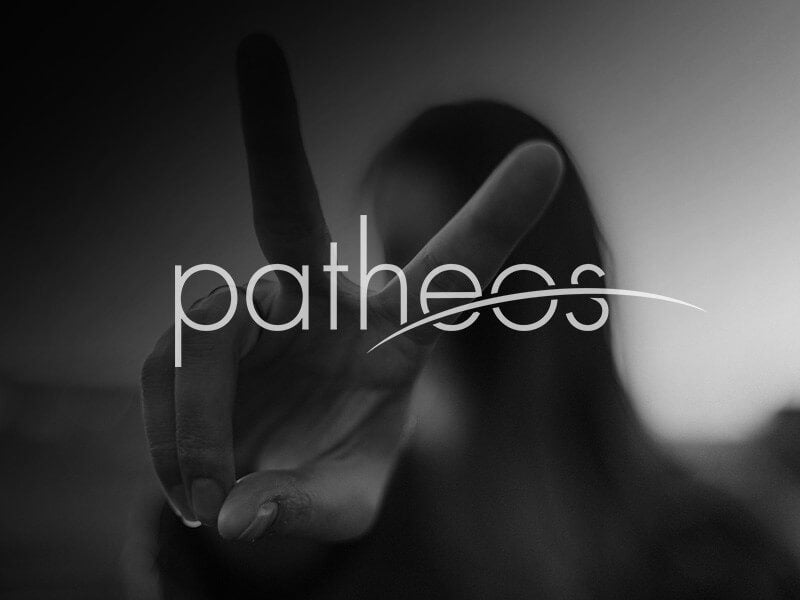TODAY IN GOD:
RELIGION NEWS BITES FOR YOUR SNACKING PLEASURE
____________________________________________________________________________________
The Gospel of Dobson
James Dobson is the Christian right’s most powerful leader. While the Moral Majority and the Christian Coalition have crumbled, Dobson’s organization, Focus on the Family, has prospered. His multimillion-dollar-a-year media empire includes a daily radio show, with him as the host, that reaches millions of listeners, as well as a rapid-response telephone and letter-writing operation.
This empire is based at an 88-acre campus in Colorado Springs, with some 1,300 employees and a 75,000-square-foot warehouse filled with DVDs, CDs, pamphlets and books that disseminate Dobson’s advice on matters like how to stop bed-wetting or confront a teenager about drug use, not to mention admonitions against gay rights and judicial activism. And while other leaders of the religious right, like Ralph Reed and Ted Haggard, have been tainted by scandal, Dobson’s own family exemplifies his gospel: his daughter, Danae, has displayed remarkable literary fecundity, producing more than 20 books aimed at Christian children; his son, Ryan, who leads a skateboarding ministry, is a co-author of “Be Intolerant,” a broadside against moral relativism written for young adults.
In “The Jesus Machine: How James Dobson, Focus on the Family, and Evangelical America Are Winning the Culture War,” Dan Gilgoff, a senior editor at U.S. News & World Report, chronicles Dobson’s extraordinary rise. In 2004, Gilgoff made his first trip to the headquarters of Focus on the Family, where he met with numerous staff members and moseyed around the campus for several days before finally landing a rare interview with Dobson himself. Dobson, who apparently distrusts any media he doesn’t control, hit it off with Gilgoff, but the author’s unusual access ended abruptly a year ago when Dobson and his associates learned the title of this book. They need hardly have worried. An astute observer, Gilgoff presents his material in a dispassionate fashion, although he might have attempted to draw broader conclusions from it.
According to Gilgoff, Dobson’s ancestors were charter members of the Church of the Nazarene, a small Christian denomination established at the outset of the 20th century. For almost two decades, however, Dobson, who was born in 1936, focused on a career as a medical researcher and as a professor of pediatrics at the University of Southern California School of Medicine. Then the 1960s arrived, and Dobson was radicalized. In 1970, he wrote “Dare to Discipline,” a countermanifesto to the child-rearing techniques espoused by Benjamin Spock; it defended, among other things, spanking with a belt or a switch. A 1981 one-hour television special called “Where’s Dad?” made Dobson a household name among evangelicals.
The radio show took off in the early ’80s. “Dobson’s avuncular manner,” Gilgoff writes, “and his capacity for letting grown men break down with the tape rolling were a sharp break with Christian radio’s customary fire-and-brimstone sermons.” While Dobson did not shrink from pronouncing uncompromising judgments about topics like premarital sex, he also stressed that it was never too late to achieve redemption by reversing course and becoming a “secondary virgin.”
FOR THE FULL REVIEW (of my buddy Dan Gilgoff’s new book in the NEW YORK TIMES) CLICK HERE
Health activists look to religion to make the case against female genital mutilation
NAIROBI, Kenya — Trying to stop a bloody ritual undergone by millions of Muslim women in sub-Saharan Africa and the Arab world, health activists are trying a new appeal — they’re citing the Quran.
“The guiding factor is always Islam,” says 34-year-old Maryam Sheikh Abdi, who grew up in a region of northeast Kenya where 98 percent of girls are believed to undergo the procedure, a genital mutilation sometimes called female circumcision. Women believe “the pain, the problems, the bleeding — they are all God’s will.”
Health activists, finding that focusing on women’s rights isn’t working to persuade Muslims to stop performing the ritual, are increasingly using theology to make the case that “the cut” has nothing to do with religion. Abdi, who speaks about female genital mutilation on behalf of the U.S.-based Population Council, said invoking Islam penetrates years of cultural indoctrination.
“Women don’t have to torture themselves. Islam does not require them to do it,” said Abdi, who underwent the procedure when she was 6 and was a college student by the time she realized it was not necessary from a religious viewpoint.
With age-old cultural roots, female genital mutilation is practiced today in parts of sub-Saharan Africa and Egypt and other parts of the Arab world such as Yemen and Oman. In the rest of the Islamic world — the Middle East, North Africa, southeast Asia — it’s nearly nonexistent.
In the most extreme form, the clitoris and parts of the labia are removed and the labia that remain are stitched together. Those who practice it believe it tames a girl’s sexual desires and increases her marriage chances.
Knives, razors or even sharp stones are used during ceremonies usually performed by elder women in the bush with no medical supervision. The tools are frequently not sterilized, and often, many girls are cut at the same ceremony, creating the chance for serious infection.
Late last year, the top cleric in Egypt — where the practice is pervasive and many believe it is required by Islam — spoke out against it, saying circumcision was not mentioned in the Quran, the Muslim holy book, or in the Sunna, the sayings and deeds of Muhammad — the two main sources of Islamic practice.
FOR THE FULL STORY (AP VIA INTERNATIONAL HERALD TRIBUNE) CLICK HERE
Muslim taxi drivers draw ire for refusing customers with booze
Some Muslim taxi drivers in Minnesota have drawn the ire of airport authorities for refusing to pick up customers carrying alcohol.
The cabbies, many of them Somali, have shut their doors to more than 5,200 customers who landed at Minneapolis-St. Paul International Airport since 2002.
They’ve also refused a number of customers in the city who want to bring a bottle of wine or liquor home with their groceries.
Most were able to get another taxi, but scores were left standing at the curb or unceremoniously dumped on city streets when the cabbies found out, mid-ride, that there was booze in their baggage.
With nearly 50,000 Somali immigrants, Minnesota is fast becoming a testing ground for such assimilation issues, including flare-ups involving Muslim store cashiers who don’t want to scan pork at the check-out counter.
The large percentage of taxi drivers who are Somali has made the industry a lightning rod for cultural differences.
Steve Wareham, director of Minneapolis-St. Paul International Airport, said the influx of Somalis since the 1990s, most of whom are Muslim, has led to uncharted territory for airport authorities.
“It’s unique in that we haven’t found a problem like this in any other airport or city in the world,” Wareham said.
FOR THE FULL STORY (AGENCE FRANCE PRESSE VIA YAHOO NEWS) CLICK HERE
Radio station refuses ads about female pastor
Mars Hill, a local Christian radio network, won’t accept paid advertising for an upcoming Christian crusade in Syracuse because a female pastor is participating.
“We can’t comfortably promote women in the role of pastor,” said Wayne Taylor, the general manager.
Mars Hill’s nine-member, all-male board of directors voted unanimously Tuesday to accept an interpretation of Scriptural passages that prohibit women from serving as church elders or pastors. That means the Syracuse-based network of four stations will not advertise or promote the two-day City Wide Crusade, which features a June 8 appearance by televangelist Pastor Paula White.
“It’s a doctrinal issue,” Taylor said. “It’s not about women preaching. It has to do with a woman taking on a pastor’s role.” Some Christians say literal interpretations of the Bible describe specific roles for men and women. “We know it’s not going to be popular,” Taylor said of the board’s decision. “The word of God is what we’re taught.”
Bishop Robert Jones, founder of Syracuse’s Apostolic Church of Christ, the church whose 1970s neighborhood revival developed into the City Wide Crusade, disagrees with Taylor’s interpretation.
“I have no problem with women pastors,” Jones said.
William R. Clark, president of City Wide Crusade and son of a pastor in Erie, Pa., said the organization had planned to pay the Mars Hill Network $250 for 25, 30-second ads about the June 7 and 8 event.
“I don’t know how you can discriminate against female pastors,” he said. “You should not sit in the judgment seat to determine who God will use to deliver the word.”
He said the crusade is paying for ads on WSIV-AM 1540, a Gospel station in Syracuse, and stations in Rome, Rochester and Buffalo.
Jones is the father of entertainer Grace Jones and Bishop Noel Jones, pastor of City of Refuge Church near Los Angeles.
Noel Jones and White preached at the 2004 City Wide Crusade at Syracuse’s Oncenter. White and her husband, Randy White, are co-pastors of Without Walls Church in Tampa, Fla.
Neither White nor her publicist was available for comment Tuesday.
The issue was not on the agenda of the regularly planned monthly board meeting, said board President Clayton Roberts, of Syracuse. But the directors discussed it for about 45 minutes, Taylor said. Mars Hill began broadcasting WMHR-FM Radio 102.9 in 1969. It is a nonprofit corporation. “Mars Hill” is a reference to the location where the apostle Paul is said to have preached outside Athens, Greece.
Taylor andRoberts said the Bible is clear on the issue of female pastors.
“We want to follow the Scriptures as much as we can,” Roberts said. The two cited a reference from the New Testament, an account of St. Paul’s letter to Timothy: “But I suffer not a woman to teach, nor to usurp authority over the man, but to be in silence.”
FOR THE FULL STORY (RENEE GADOUA IN THE SYRACUSE POST-STANDARD) CLICK HERE
The Church Ladies
AFTER holy communion had been celebrated and the parishioners were back in their pews, a children’s choir began to sing in Spanish. As their voices filled the ornate Roman Catholic church, Mary Help of Christians on East 12th Street, a white-haired congregant named Josephine Ruta strode with purpose toward the altar. With a wave of her hand, she summoned the pastor, the Rev. Mark Hyde, and informed him that she wanted to sing a song.
“As long as you don’t cry,” Father Hyde whispered. He had reason to worry. This service, on May 20, was the church’s final Sunday Mass as an independent parish.
With her back to the crowd of nearly 900 people, Ms. Ruta stretched her hands outward and — without crying — sang “Maria Ausiliatrice” (“Mary Help of Christians”) a cappella in Italian. When she finished, the congregation burst into applause and she returned to her pew, where her sister, Margaret, 84, wept silently, her bright blue eyes hidden in a tissue.
The hymn has long been sung in this church by generations of Italian immigrants and their children, like Ms. Ruta and her sister. “I still remember the words like it was yesterday,” Ms. Ruta said proudly. “And I’m going to be 88 in July.”
Age and tradition have been major topics of discussion on East 12th Street since January, when the Archdiocese of New York announced that Mary Help of Christians Church would be among the 21 parishes to be closed as part of its realignment plan. While this East Village church will continue to have two Sunday Masses for the immediate future, they will be overseen by a different church, Immaculate Conception on 14th Street and First Avenue. The rich, 109-year history of Mary Help of Christians will be over.
The church was originally built for Italian immigrants who, like the Ruta sisters’ Sicilian parents and my Sicilian grandparents, flooded the East Village at the turn of the last century. My mother lived a few doors down from the Ruta sisters and has been lifelong friends with them. Like the sisters, she belonged to Mary Help of Christians and attended Mass there, and in June 1960 she married my father there.
The difference is that after marrying, my parents, like so many others, moved away, while the Ruta sisters stayed put in this ever-changing East Village neighborhood. They have lived in the same tenement building for more than 80 years; Mary Help of Christians is the only church they have known.
FOR THE FULL REPORT (NEW YORK TIMES) CLICK HERE
Thailand set to make Buddhism the state religion
BANGKOK — In a step that could sharpen divisions in its increasingly violent, largely Muslim southern provinces, Thailand appears ready for the first time to make Buddhism the state religion in a new constitution.
Under pressure from masses of orange-robed monks who have rallied in the streets and distracted by other political challenges, the country’s military-backed government is going along with a notion that has made little headway in the past.
The movement comes at a time of increased divisions and political tension in Thailand as the government seeks to pass a constitution, hold a parliamentary election and return the country to democracy by the end of the year.
The junta seized power in a nonviolent coup Sept. 19, ousting then-Prime Minister Thaksin Shinawatra while he was abroad.
At the moment, the political focus is on a court ruling scheduled for Wednesday on whether to disband Thailand’s two major political parties on charges of electoral fraud a year ago.
Such a ruling could touch off a backlash, and the military is preparing for possible street demonstrations including a plan by backers of Thaksin to march 99 elephants into Bangkok.
More than 90 percent of Thais are Buddhist, and Thailand is already, in effect, a Buddhist state, its rituals, monarchy and national identity closely tied to the religion. It also has a reputation for tolerance and inclusiveness, qualities that have become strained under the pressure of political crisis.
The constitutional provision would be largely symbolic, without legal weight or substantive effect on religious practices in Thailand. But analysts said it would be dangerously divisive at a moment when Buddhists and Muslims are confronting each other in the south more directly and violently than ever.
FOR THE FULL REPORT (INTERNATIONAL HERALD TRIBUNE) CLICK HERE
The Offbeat Is Helping Some Jews Reconnect:
Chabad Rabbis’ Modern Outreach Methods Are Controversial but Forge Ties
With ice cream sundaes, iPod giveaways, spa days and yoga classes, a group of Orthodox rabbis in the Washington area is employing decidedly unorthodox methods to address a growing problem: the fading involvement of Jews in local Jewish life.
Although the region has one of the largest and youngest Jewish communities in the country, recent studies have found that a shrinking proportion of Jews– as elsewhere in the country — is joining synagogues, community centers, Jewish schools and other centers of Jewish life.
However, Chabad-Lubavitch, a controversial 250-year-old branch of Judaism with mystic roots, has significantly increased its presence in the area in the past five years. During that time, five gathering places — called Chabad Houses — have opened: two in Northern Virginia, two in northern Montgomery County and one in Annapolis. Rabbi Shmuel Kaplan, regional director of Chabad-Lubavitch of Maryland, said the movement expects further expansion.
“People ask me who our target audience is,” he said. “It’s every single Jew in metropolitan Washington.”
With their black hats, thick beards and long, black coats, male “Chabadniks” look like throwbacks to Old Europe. They are part of the movement called Hasidism, whose members — men and women — ordinarily live apart from mainstream society to shelter their beliefs and practice.
Not the followers of Chabad (pronounced similarly to ‘kah-BAHD’). The Brooklyn-based group emphasizes outreach to practicing and non-practicing Jews.
But the group has also engendered deep resentment from many mainstream Jews, who regard them as hovering on the far fringes of the faith.
Although Chabad-Lubavitch practitioners do not seek to convert non-Jews, mainstream Jews regard their outreach as evangelizing, a practice frowned upon. Critics also dismiss Chabad’s outreach as superficial and say its leaders are too quick to claim success.
“They’re offering a motel Judaism, not a home Judaism,” said Jacob Neusner, a professor and senior fellow at Bard College’s Institute of Advanced Theology in New York. “They rely on intense experiences which last for a little bit of time and don’t really have a permanent effect.”
Another source of controversy, inside and outside the movement, has been the belief on the part of some followers of Chabad that a revered leader, Rabbi Menachem M. Schneerson, who died in 1994, will return as the Messiah.
FOR THE FULL STORY (WASHINGTON POST) CLICK HERE
Drug addicts vomit out their ills in Thai monastery
THAM KRABOK, Thailand – An obscure Buddhist monastery in central Thailand that advocates a secret herbal potion and ritual vomiting for drug addicts has become a final source of hope for thousands of Thais and Westerners.
Since its foundation in 1959, Wat Tham Krabok, 140 km (85 miles) north of Bangkok, has put nearly 100,000 addicts through its “cold turkey” detox programme and given them a grounding in meditation to help them keep on the straight and narrow. The treatment — a far cry from the picture postcard beaches, jungle trekking and wild nightlife that draw millions of visitors to Thailand each year — is not for the faint-hearted.
Dressed in red hospital-style overalls, patients have to stay for a minimum of 10 days, during which they are subject to a strict regimen of leaf-sweeping, steam baths, herbal medication and group vomiting.
“Invariably, the people who end up here come as a last resort,” said Phra Hans, a Swiss psychologist who became a Buddhist monk — with the title “Phra” — after visiting Tham Krabok seven years ago.
“Everybody who comes here must come as a warrior, ready to fight for their life.”
Sitting in the shadow of an imposing limestone crag, the monastery was founded in the late 1950s by a group of monks who decided to renounce all earthly pleasures and live out the rest of their days in a cave.
However, the military rulers of the day, keen to rid the capital of its opium dens, encouraged them to accept a large plot of land in return for taking care of the drug addicts the army was booting out of Bangkok.
Using a complex herbal medicine whose ingredients were revealed to the aunt of one of the monks in a dream, the monastery started treating its first opium addicts in 1959.
To this day, the 100-odd ingredients of the thick, dark potion that lies at the centre of the detox programme remain a secret known only to Tham Krabok’s abbot and medicine monk.
“I’ve no idea what’s in it. There must be some sort of active ingredient, but the only thing I know for sure is it’s disgusting,” said Patrick, a British health worker who has spent three months at the wat overcoming alcohol and cocaine addiction.
According to Phra Hans, the potion draws toxins out of the patient’s body and into the stomach. The quickest way to get the toxins out of the stomach is for the patient to drink large quantities of water and then vomit.
In what is now a well-choreographed ceremony, patients sit cross legged and side-by-side in front of a long open drain. Accompanied by drums and chanting they then try to drink a bucket of water before sticking their fingers down their throats.
FOR THE FULL STORY (REUTERS) CLICK HERE
MANILA (AFP) – A 10-year legal fight over a “tawdry” wedding cake has ended after a Philippines couple lost their claim for damages for the humiliation and sleepless nights they said it caused them.
(Advertisement)
An appeal court ruling made public Tuesday rejected a claim seeking 50,000 pesos (1,053 dollars) in moral and other damages from a Manila pastry shop.
Edgardo Abenina and his wife Stephanie filed suit shortly after their June 21, 1997 wedding reception at a Manila hotel, alleging the five-tiered orange chiffon fondant cake did not meet specifications.
They alleged it leaned to one side, had a “tawdry-orange” colour and caused them embarrassment, humiliation, mental anguish, serious anxiety and sleepless nights.
However the court threw out the case, agreeing with a lower court that the pastry shop had had no intention to cause distress.
The court noted that the wedding pictures showed the pastry in good order, and the bride and groom smiled while cutting it. It was also partly eaten.
The shop was, however, ordered to reimburse the couple the full 4,775 pesos cost of the cake.
SOURCE: AGENCE FRANCE PRESSE VIA YAHOO NEWS















